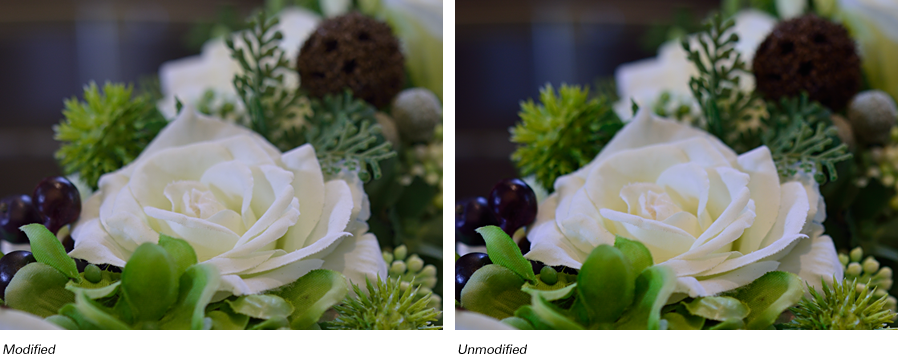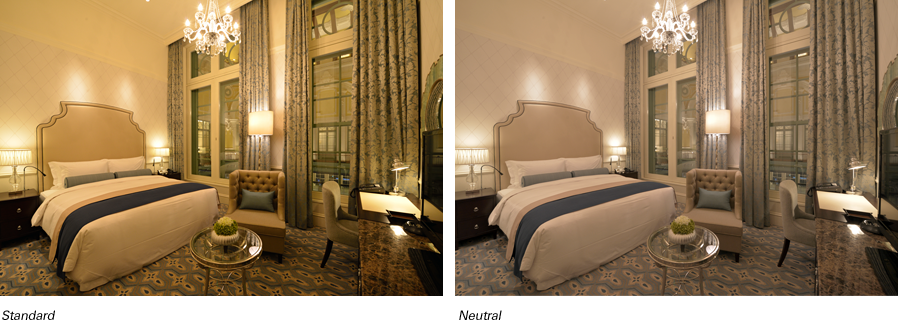Matching Settings to Your Subject – Shoot beautiful pictures of interiors
Create atmosphere with Picture Controls.

Global Support for Professionals
Create atmosphere with Picture Controls.
Bring out natural colors in roses shot under mixed lighting.

The picture above was taken with the Portrait Picture Control, with Contrast set to +1 and Hue to +3, softening the image overall.
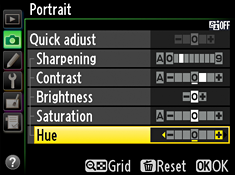
Unmodified: The Portrait Picture Control enhances highlights, making it a perfect choice for bringing out rich details in a white-colored subject. Here whites and greens have been further enhanced for an effect close to the desired results.
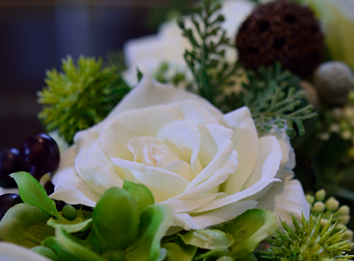
Modified: Increasing contrast slightly tones down black outlines, while the change to hue makes greens more vivid.
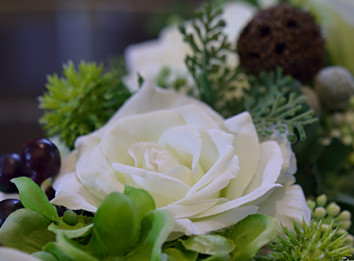
Heighten the effect of looking through a window by emphasizing the contrast between the window frame and the exterior while simultaneously reducing the effects of the window glass on the colors in the outdoor scene.
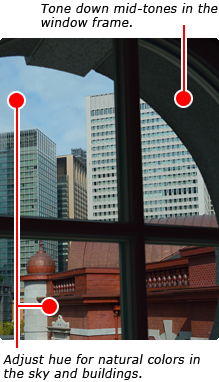
The picture above was taken with the Landscape Picture Control, with Contrast set to –2, Brightness to –1, and Hue to –3 to restore natural colors by reducing the effects of the window glass on the sky and buildings in the exterior scene.
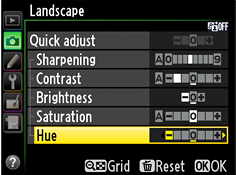

The need to slightly emphasize the concrete in the window frame makes the higher-contrast Landscape Picture Control a better choice than Standard, which would soften the overall image. The effects of the change to Brightness are most obvious in mid-tones, reducing the brightness of the window frame relative to the objects in the exterior landscape.
Interior photos in catalogs can have a hard, didactic feel. Use Picture Controls to create a soft, warm effect.

The picture above was taken with the Neutral Picture Control, with Contrast set to –2, Brightness to +1, and Saturation and Hue to –3 for reduced vividness and a calmer feel.
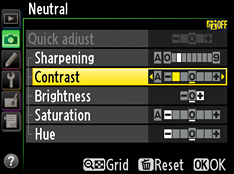
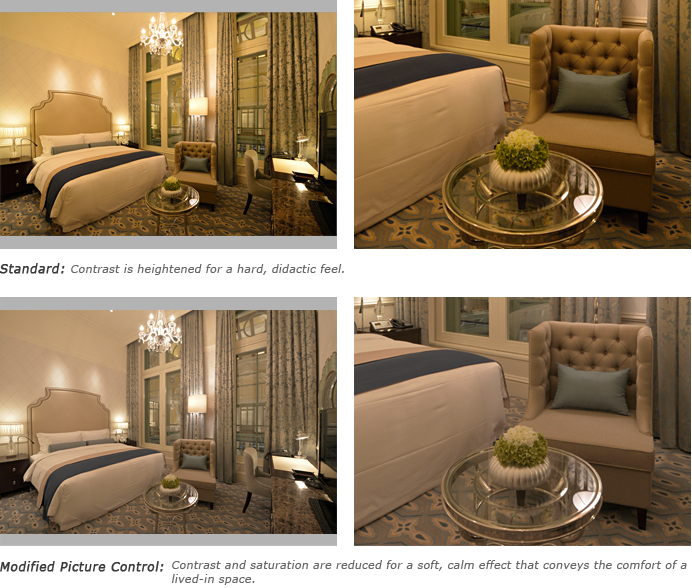
"I think the Picture Control system is revolutionary, as it permits the user to easily change settings, like brightness and saturation, depending on the subject, by simple operation with just a few buttons. The system allows you to experience digital photography more deeply as it lets you choose the preset modes based on the shape and color of the subject. The atmosphere or the feel of a room is crucial in interior photography. An interior is usually illuminated by several different types of light, such as the artificial light produced by lighting equipment and natural daylight entering through windows. Judging each particular situation, the photographer must decide which light should be enhanced in order to depict the room in the way that looks most appealing. This is also influenced by the colors of the walls, furniture and flooring materials. Preset modes come in useful to recreate the atmosphere of the room in your picture; choose Neutral when shooting an indoor space with a soft, feminine atmosphere; Standard suits a somber bar or restaurant with wood paneling or carvings; the fun, colorful atmosphere of a kid's play area can be reproduced by using Vivid. An image of an interior is a mix of different shapes, colors, textures and other diverse elements. Taking advantage of Picture Control, you can enjoy creating images that display the ambiance of a room in various styles."
Born in Tochigi, Noriko Yamaguchi is a graduate of the Photography Department of the Tokyo Polytechnic University, Junior College Department. Her work frequently appears in fashion and travel magazines, where she is known for her unique, translucent compositions. She received the 2nd Tokyo International Photo Biennial prize for her work, "Men of Istanbul", and the 16th Japan Magazine Photojournalists Association Award for "Street Artists". Her many publications include The Making of the Peninsular Tokyo, Real-G 1/1 Scale GUNDAM Photographs, and photo anthologies such as Arashiyama Kitcho: Spring, Summer, Autumn, and Winter Dining, Vegetable Sushi, Making Hawaiian Leis: The Joy of Floral Decorations, and Discarding and Keeping. She is a member of the Japan Professional Photographers Societyand likes travel, cats, and pudding.
Photo location courtesy of The Tokyo Station Hotel.
